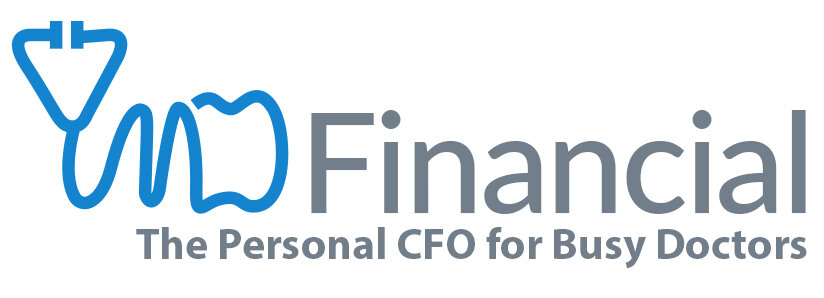Here at MD Financial, we think that a better educated client is a BETTER CLIENT. On today's episode of “More Money Minutes for Doctors” we are focusing on Disability Insurance (DI). This is one of the first things we bring up in an introductory meeting with our clients because focusing on protecting your income is top of the list for things to consider. We’ll tackle questions like: “Why might the DI I have be enough?”, “What are the different levels of policies?”, and “Who’s policy should I go with?”
First off, let’s cover a few basics: There are two types of DI, short-term and long-term:
Short-term: Usually provided by the employer
This covers sick pay and short-term injuries
Usually protects your income for a few weeks up to 6 months
Long-term: MOST IMPORTANT!
If you’re young, you are 5x more likely to be disabled than to die prematurely
When you are disabled, responsibilities like loans, kids, health care expenses, and mortgages do not go away
“My employer offers a Group Coverage DI, why might that not be enough?”
It may be, but most policies we see are about 60% of your base salary, MINUS TAX, which typically isn’t adequate to live the same lifestyle you are accustomed to
If you switch jobs, most employer-based DI doesn’t travel with you
Many times employer plans can have clauses that raise rates or cancel policies
“What are the different levels of policies?”
When looking at policies, remember that there are a few different levels of policies:
Level One: This type of policy only pays out if you are too sick or injured to do anything. No matter what! This policy is hard for many doctors, as they may be too sick to do their occupation, but to have someone sign them off as being “too sick for anything” may be unreasonable.
Level Two: You are too sick or injured to do your occupation of choice (at the time the insurance kicks in.) If you can do something else, many times you would have your other occupation’s salary taken off of what they are giving in your DI policy.
Level Three: Double dipping in your own occupation (considered the gold standard) – This comes into play if you are too sick or injured to work in your own occupation but can work in other capacities. You can get full disability benefits, but then also allowed to keep income from alternate employment opportunities.
“What does underwriting entail?”
Phone interview
Possible Bloodwork
Mini-physical
Health history
Financial Documentation
**Remember, you should never be sending money in advance of the policy placement**
“What are some of the terms on my DI policy?”
Benefit Updates (BUs) and Future Increase Options (FIOs)
Your income is likely to increase throughout your career as a doctor. Most policies give you the option to increase your coverage so you won’t have another gap in insurance
BUs usually are available 1x every 3 years. The carrier confirms your current income and may allow you to increase your coverage, while staying at the same health rating you were in the past
FIOs keep your benefit up to date, with inflation
TAKEAWAYS:
If you haven’t had your policies reviewed in the last year or two, make sure you bring this to your independent financial advisor so that they make sure you have the best policy. It can save you tens of thousands of dollars in the long run
In many cases, as long as the premiums are paid on the policy the insurance company cannot cancel policy and can’t raise the rates, but be sure to read the fine print
Having an agent/advisor that you trust is key to choosing the right product so you know what is covered and what is not as well as getting the best priced package. An ethical and independent financial advisor can also help you save on your taxable income, as there are differences whether the employer or the employee is paying the insurance premiums
Listen on Apple Podcast or Google Podcast
CONTACT US
1-888-256-6855
Katherine Vessenes, JD, CFP®, is the founder and CEO of MD Financial Advisors who serve 500 doctors from Hawaii to Cape Cod. An award-winning Financial Advisor, Attorney, Certified Financial Planner®, author and speaker, she is devoted to bringing ethical advice to physicians and dentists. She can be reached at Katherine@mdfinancialadvisors.com.
FOLLOW US ON SOCIAL MEDIA

![How Much is Enough DI for Doctors? [Podcast]](https://images.squarespace-cdn.com/content/v1/561feb4ee4b0de0eb30d6d3c/1602705930119-GR99K9HQ2XYH4GE2EGW8/Umbrella+with+coins.jpg)